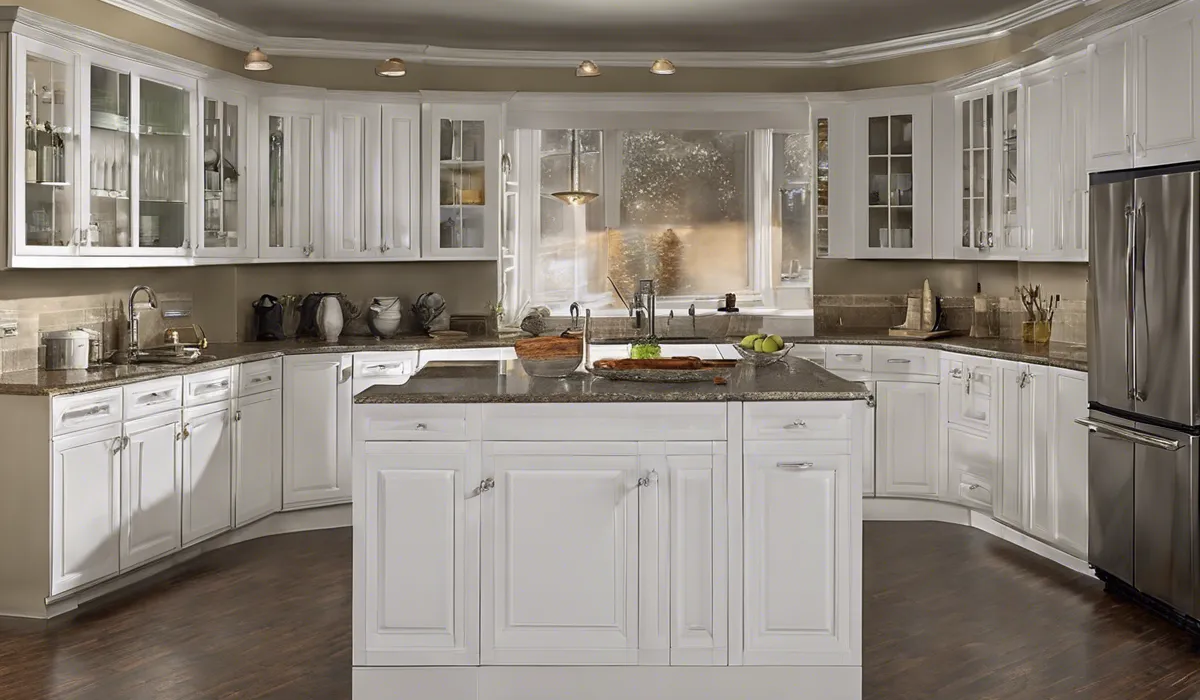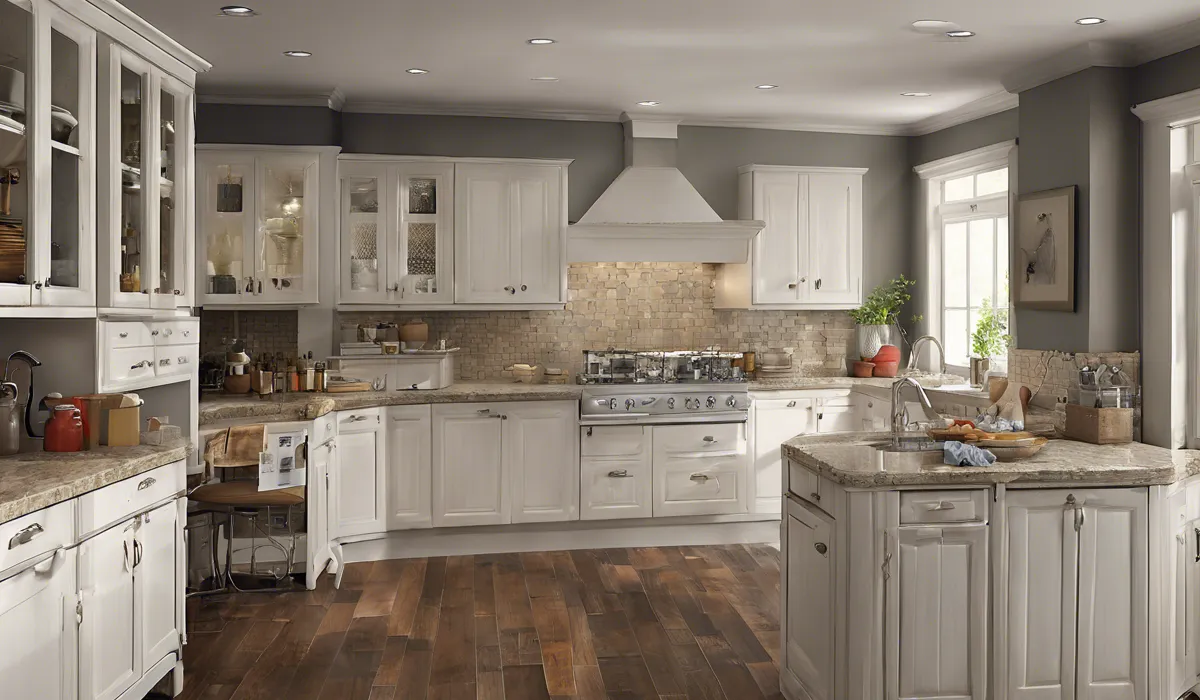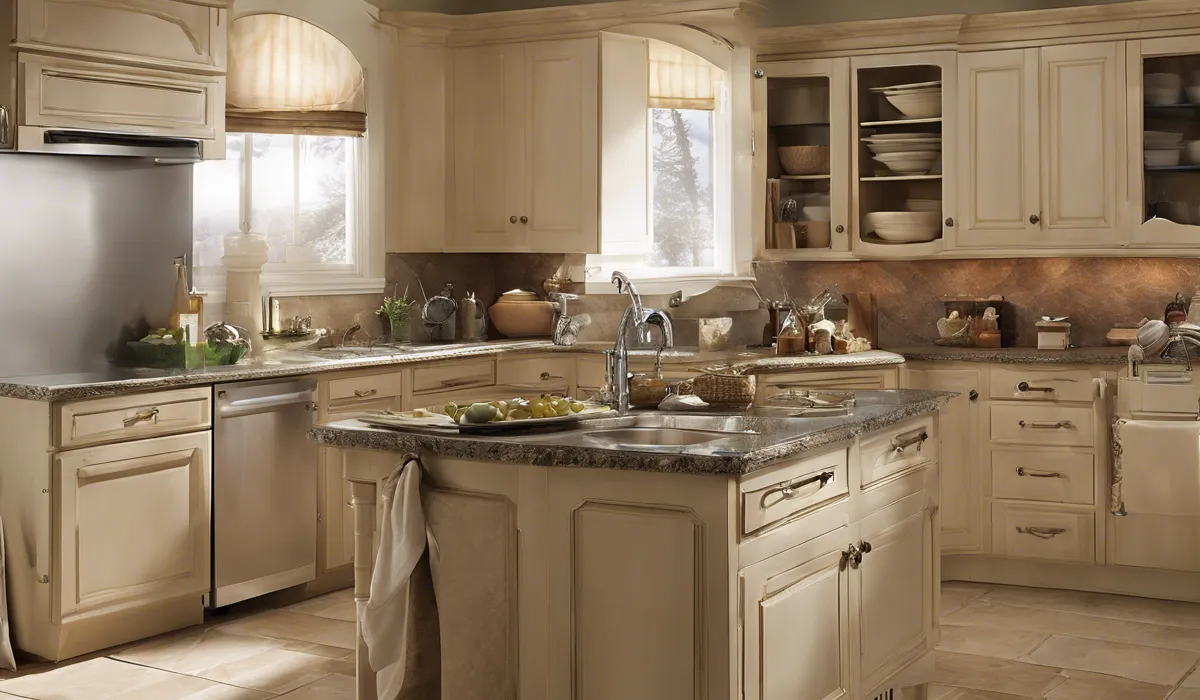Do You Need a Cabinet for a Dishwasher? Installation Tips!
A cabinet is not strictly necessary for a dishwasher, but most are designed to fit within standard cabinetry for aesthetic and practical reasons. Freestanding or portable dishwashers are alternatives that don’t require cabinetry.
Importance of a Dishwasher Cabinet

Protection and Stability for the Dishwasher
Installing a dishwasher within a cabinet provides essential protection and stability. The cabinet framework supports the dishwasher, preventing wobbling or tipping during operation.
This stability is particularly important as the motion from the wash cycle can cause movement in less secure setups.
Moreover, cabinets shield the dishwasher from potential kitchen mishaps and traffic, reducing the risk of dents, scratches, or other physical damage.
This protective environment ensures the longevity and optimal performance of the appliance.
Aesthetics and Integration into Kitchen Design
Incorporating a dishwasher seamlessly into kitchen cabinetry enhances the overall look of the space. A built-in cabinet ensures the dishwasher complements the design and flow of the kitchen.
This integration can be crucial for maintaining the style of the kitchen, as a mismatched or conspicuous appliance might disrupt the visual harmony.
With a cabinet, the dishwasher front can often be customized to match the surrounding cabinetry, creating a cohesive and sophisticated appearance.
Sound Insulation Benefits
A dishwasher cabinet also provides sound insulation, dampening the noise produced during a wash cycle. This is particularly beneficial in open-plan homes or where the kitchen is close to living areas.
Enclosing a dishwasher within a cabinet helps to absorb and contain the noise, resulting in a quieter kitchen environment.
This can make a significant difference in the overall ambiance of a home, especially during the evening hours when the sound of a dishwasher could be intrusive.
Alternatives to a Traditional Cabinet

Standalone Dishwasher Options
For those who prefer not to use a traditional cabinet, standalone dishwashers offer a flexible alternative. These units are finished on all sides, allowing them to be placed anywhere in the kitchen.
Standalone dishwashers can be a practical choice for renters or homeowners who might move frequently, as they are easier to uninstall and transport.
They also come in various sizes, which can be an excellent fit for smaller kitchens or areas where a full-size dishwasher would not be practical.
Portable or Countertop Dishwashers
Portable and countertop dishwashers are ideal for those with limited space or no suitable cabinetry. These compact appliances fit on a countertop or can be moved around the kitchen as needed.
They typically connect directly to a faucet for their water supply and drain into the sink, bypassing the need for permanent plumbing installations. These options are perfect for small apartments or homes without a dedicated space for a dishwasher.
Custom-Built or Modular Support Structures
Custom-built or modular support structures can be designed to accommodate a dishwasher without a traditional cabinet. These structures can be tailored to fit the specific dimensions of the appliance and the available space in the kitchen.
They offer the same level of support and protection as a cabinet but can be constructed to suit unique design preferences or functional requirements. This option allows for creative freedom and can be a solution for non-standard kitchen layouts.
Installation Considerations

Space and Size Requirements
When installing a dishwasher, whether within a cabinet or as a standalone unit, it is crucial to consider the space and size requirements.
The dishwasher should fit comfortably in the designated area, with enough room for the door to open and close without obstruction.
It is also important to leave some clearance behind and on the sides of the appliance for proper ventilation and to ensure easy access for maintenance or repairs.
Measuring the space accurately before purchasing a dishwasher is essential to avoid any installation issues.
Plumbing and Electrical Connections
Proper plumbing and electrical connections are vital for the safe and efficient operation of a dishwasher. The appliance must be connected to both hot water and drain lines.
Additionally, it requires an electrical outlet or hardwiring for power. Ensuring that these connections are within reach and comply with local building codes is essential.
If you are uncertain about the requirements or the installation process, it is advisable to consult with a professional plumber or electrician.
Ventilation and Drainage Needs
Ventilation and drainage are critical factors in the installation of any dishwasher. Proper ventilation helps to prevent the buildup of heat and moisture, which can lead to mold growth and damage to both the dishwasher and surrounding cabinetry.
Drainage is equally important, as it ensures that waste water is removed efficiently and without leaks. It is essential to follow the manufacturer’s guidelines for ventilation and drainage to maintain the dishwasher’s performance and longevity.
FAQs About Dishwasher Cabinetry Requirements
Is a cabinet necessary to install a dishwasher?
No, a cabinet is not strictly necessary; there are freestanding and portable dishwashers available.
What types of dishwashers do not require cabinetry?
Freestanding and portable dishwashers do not require cabinetry.
Can you place a dishwasher anywhere in the kitchen?
While you can place a freestanding or portable dishwasher anywhere with access to water and drainage, built-in models should be placed within cabinetry.
Are built-in dishwashers designed for standard cabinet sizes?
Yes, most built-in dishwashers are designed to fit standard cabinetry sizes.
How does a portable dishwasher differ from a built-in unit?
A portable dishwasher is typically on wheels and can be moved around, while a built-in unit is installed into a fixed space within kitchen cabinetry.
Final Thoughts
While a cabinet is not mandatory for a dishwasher’s operation, most models are designed to integrate seamlessly with standard kitchen cabinetry, enhancing the kitchen’s appearance and utility.
For those without suitable cabinetry, freestanding or portable dishwashers offer flexible, non-built-in alternatives for convenient dish cleaning.





